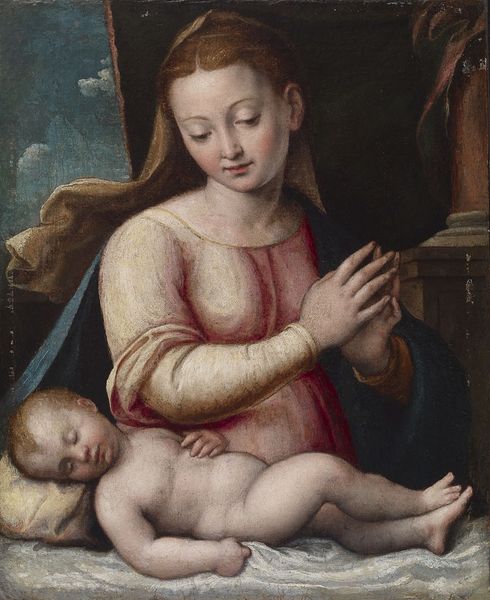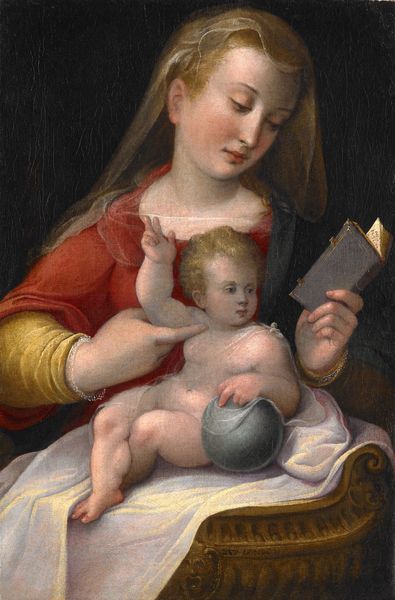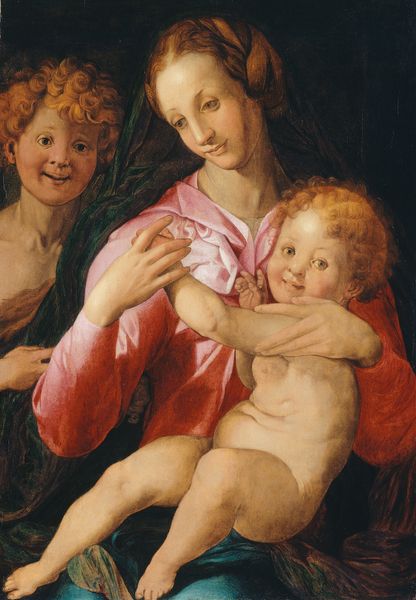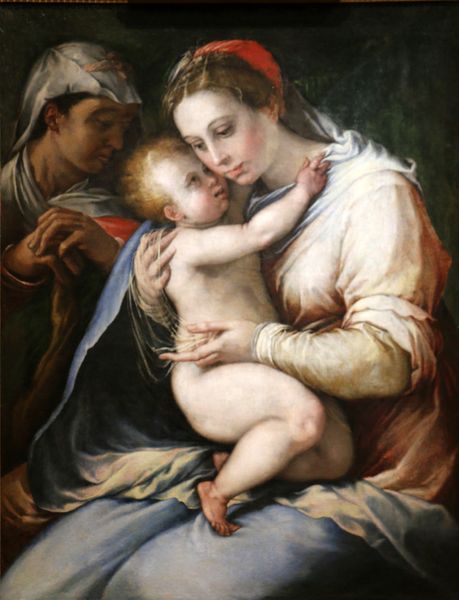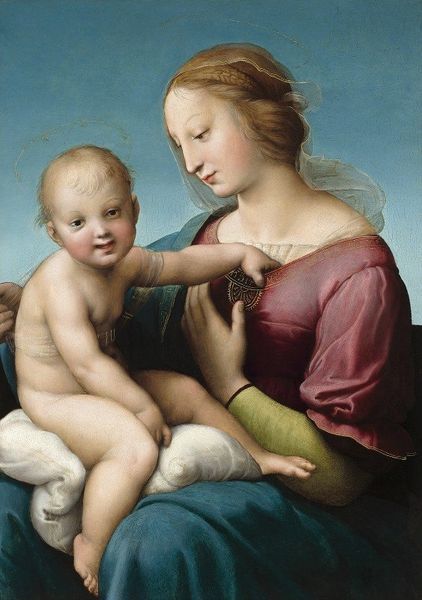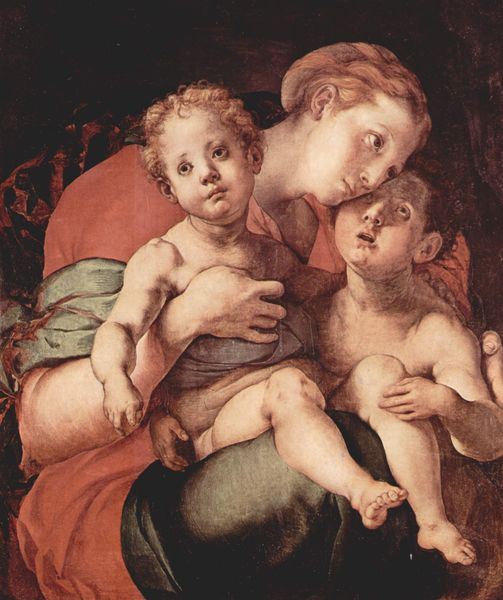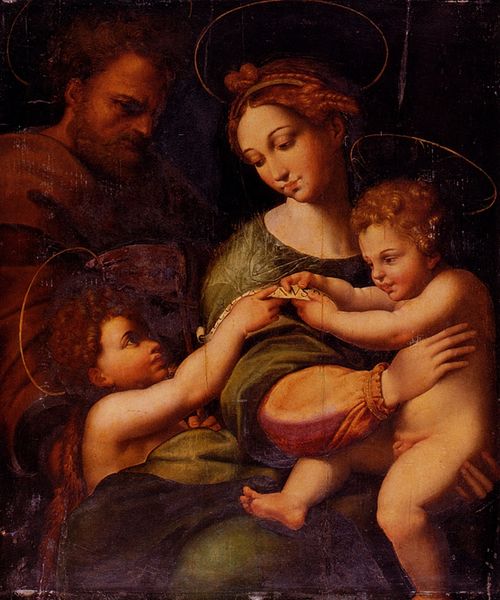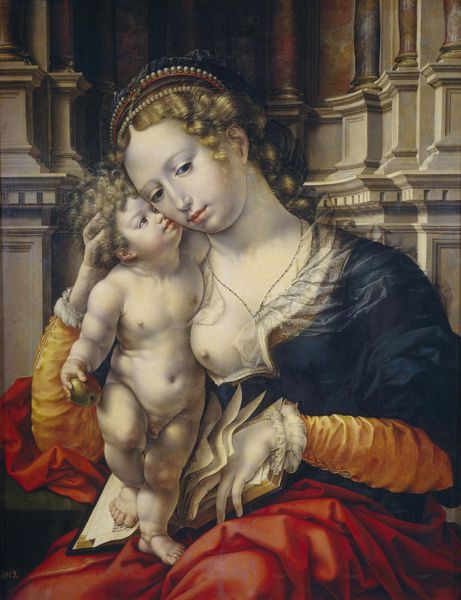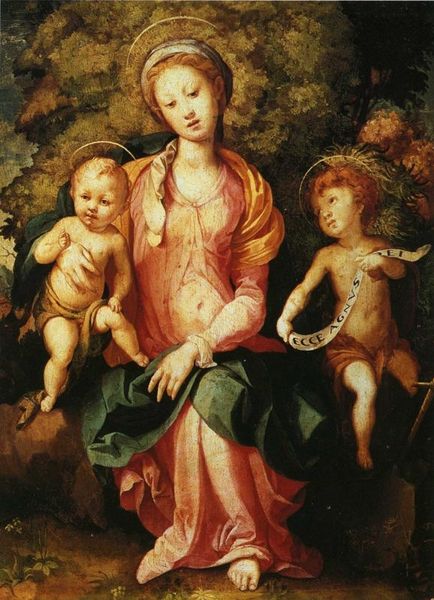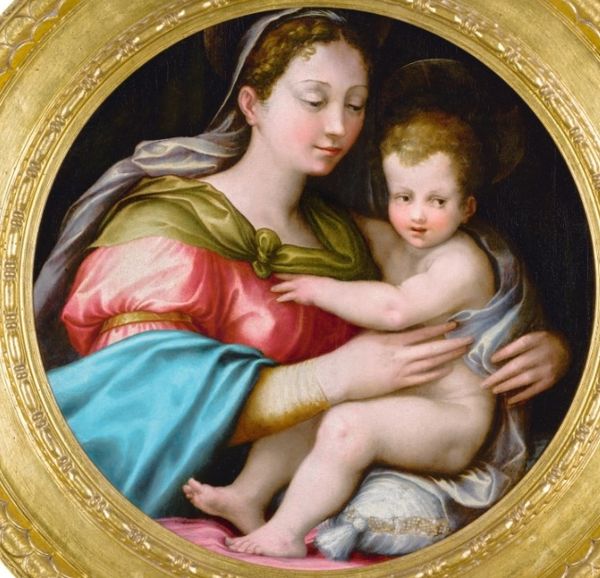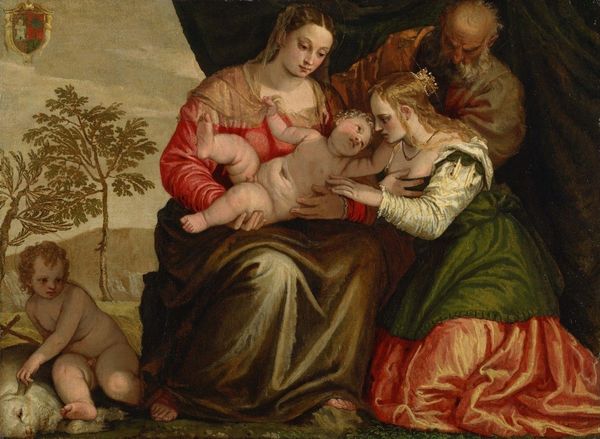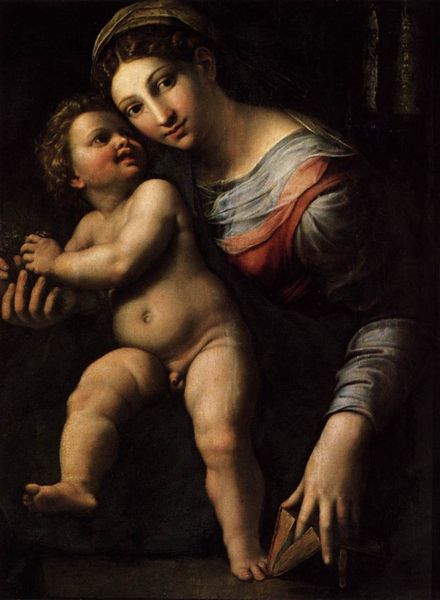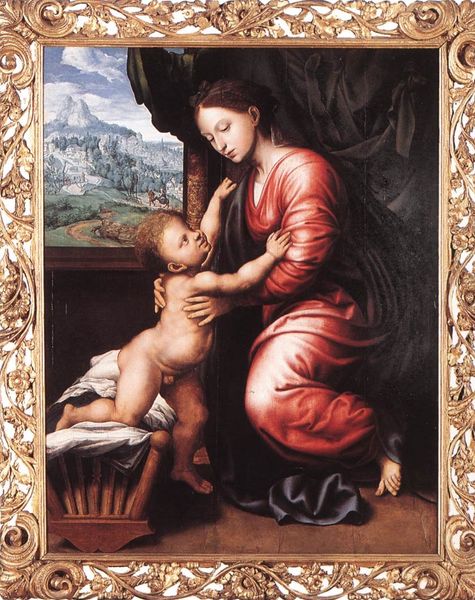
painting, oil-paint
#
portrait
#
painting
#
oil-paint
#
mannerism
#
figuration
#
madonna
#
history-painting
#
italian-renaissance
Dimensions: 88.5 x 109 cm
Copyright: Public domain
Curator: This is Parmigianino’s “Madonna of the Rose,” an oil painting dating back to 1530, now housed in the Gemäldegalerie Alte Meister in Dresden. Editor: Immediately, what strikes me is this sense of opulence weighed against fragility, almost melancholy. Look at the fabrics, the deep reds contrasting with the delicate skin tones... It’s captivating, but uneasy. Curator: A perfect encapsulation of the Mannerist style. The composition feels artificial, idealized. There's a tension between the sacred subject matter and the sensuality conveyed through the painting's elements. The rose itself symbolizes Mary's love and her son’s sacrifice. Editor: Right, and I see the materials at play – the oil paint allowing for those luminous surfaces, almost porcelain. You sense the hours spent layering pigment to achieve that level of detail. What would have the working conditions looked like? The pigments used, likely sourced from various locales. The cost of such skilled labor during this time also affects this subject matter Curator: That level of patronage definitely shaped the artwork. Paintings of the Madonna were incredibly popular but only for certain members of society. It reflected societal values and power structures. And who did the image appeal to? Editor: I keep returning to the surface quality – so smooth, so perfected. It's almost unsettling how he has elevated ordinary raw materials to this level of artifice. The contrast with the globe which at the time was limited, makes you wonder how this reflects the power structure between church and society? Curator: Definitely, the painting underscores the church's power in disseminating particular images and ideals, particularly in a time of religious reformation. It's a strategic portrayal designed to evoke piety and devotion. Editor: Indeed, seeing the finished product removes all sense of process or even labor but so many materials and work happened to present what is displayed here. It really makes me want to understand that process behind making these pieces of art. Curator: The politics embedded in the display are fascinating. And as we've discussed, the interplay between social influence and creative innovation makes for such a compelling study. Editor: Agreed. Analyzing how Parmigianino blended his craft with social, cultural context and accessible materials of the time, gives me even greater appreciation. It highlights how art really has meaning because of all of these elements in production.
Comments
No comments
Be the first to comment and join the conversation on the ultimate creative platform.
